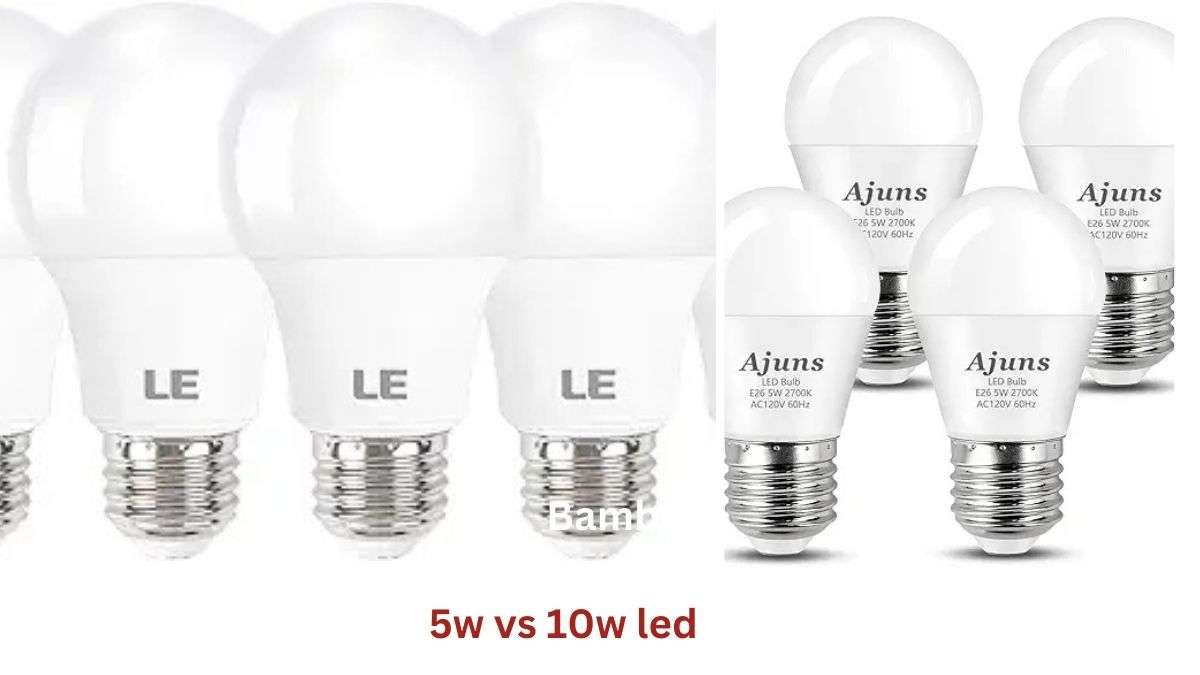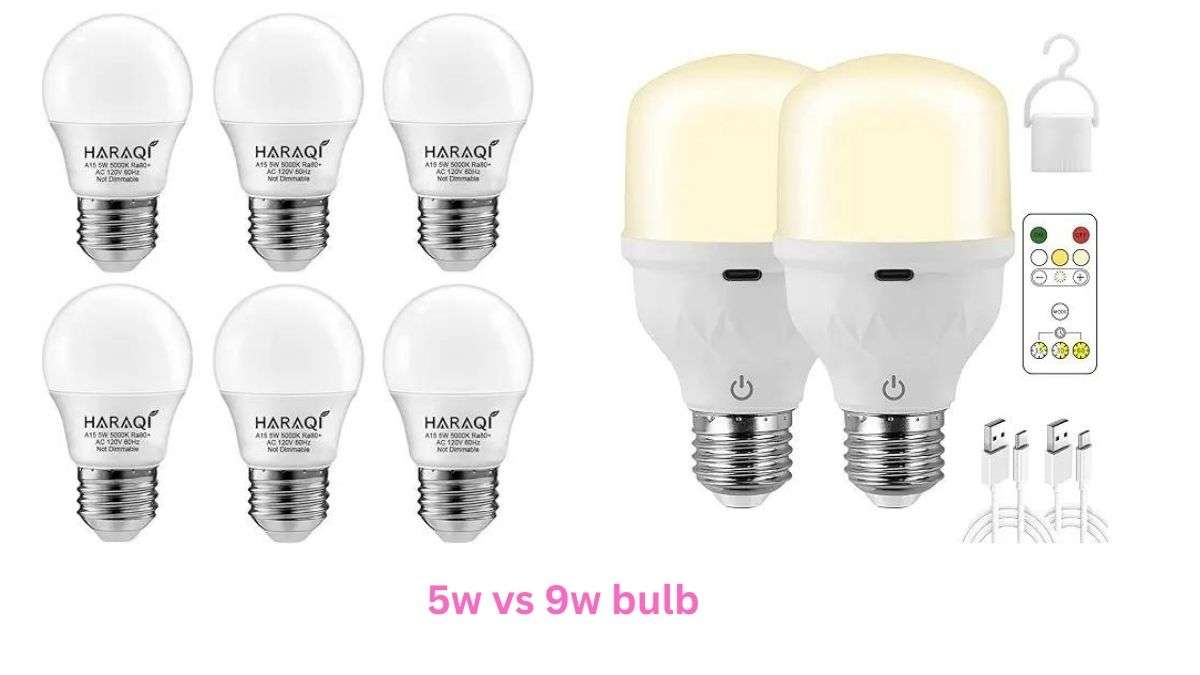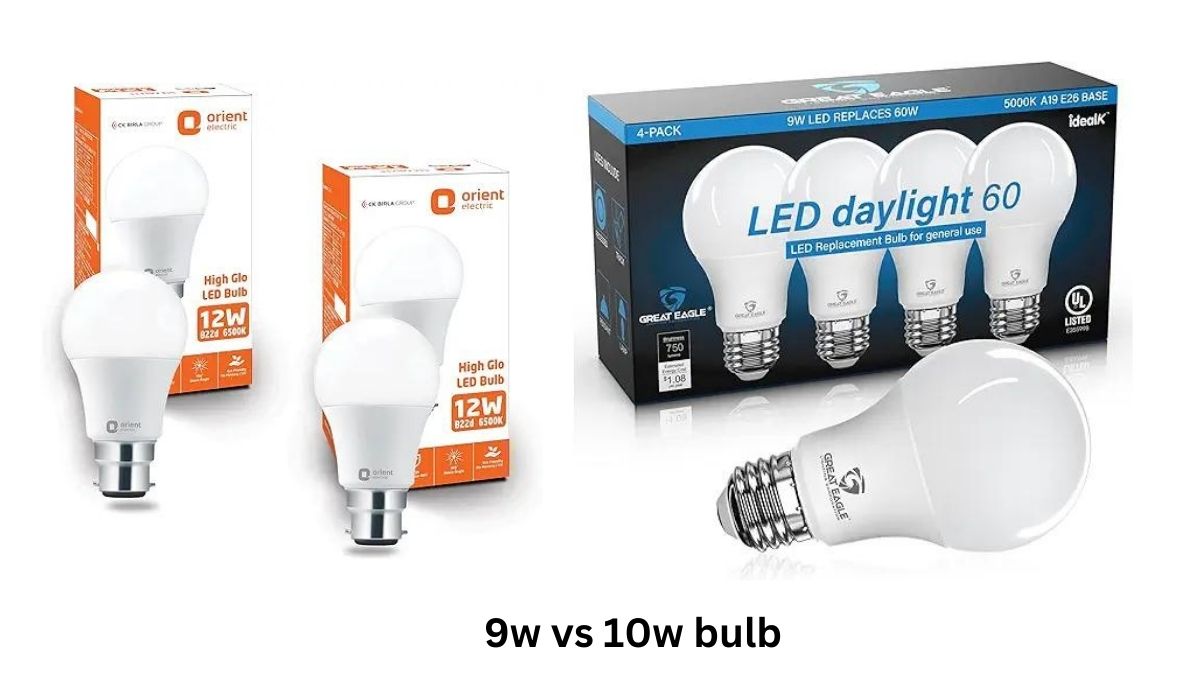Get best and Affordable LED bulbs: Check price
Did you know that switching from traditional bulbs to LEDs can reduce your energy consumption by up to 90%? LEDs have revolutionized lighting with their energy efficiency and lasting power, but if you’re comparing 5W vs 10W LED bulbs, the choice isn’t always clear. As an expert with a great experience and someone who has tested a variety of LED bulbs, I’m here to share insights to help you make the best decision. Whether you’re upgrading home lighting or choosing LEDs for a commercial space, this guide will break down what you need to know!
Understanding LED Wattage and Brightness
When considering LED bulbs, it’s important to understand that wattage and brightness are not the same. In traditional incandescent bulbs, higher wattage means more brightness, but with LEDs, brightness is measured in lumens, not watts.
- Lumens vs. Watts: Watts measure power consumption, while lumens measure brightness. A 5W LED, for example, typically emits around 400-500 lumens, providing a soft glow ideal for accent lighting. A 10W LED, on the other hand, delivers 800-1000 lumens, equivalent to the brightness of a 60-70W incandescent bulb.
- Real-world brightness applications: A 5W LED bulb is similar to a 40W incandescent in brightness, while a 10W LED can replace a 60W to 70W traditional bulb. This makes 5W LEDs great for smaller, cozier spaces, while 10W LEDs are ideal for larger areas requiring more illumination.
Energy Consumption and Cost Analysis
One of the biggest advantages of LEDs is energy savings, but it’s important to compare the specifics for both 5W vs 10W LED options.
- Annual Energy Consumption: Using a 5W bulb for 5 hours per day consumes about 9.1 kWh per year, while a 10W bulb uses about 18.25 kWh annually. While both save energy compared to incandescent bulbs, 5W bulbs are slightly more cost-efficient.
- Cost Breakdown and Savings: If your energy rate is $0.12 per kWh, a 5W LED would cost around $1.10 per year to operate, whereas a 10W LED would cost about $2.20. Though this might seem minimal for one bulb, the savings grow when lighting an entire home or building.
- Environmental Impact: Both 5W and 10W LEDs have a lower environmental impact than traditional bulbs, reducing CO2 emissions by consuming less energy over time.
- ROI Timeline: While LED bulbs may have a higher upfront cost, the return on investment (ROI) is quick due to their longevity and low energy usage. For most people, the ROI for LED bulbs is often achieved within the first year of usage.
Best Applications for 5W LED Bulbs
5W LED bulbs are best suited for smaller spaces and specialized lighting needs. Here are some ideas:
- Room Types and Spaces: Perfect for small bedrooms, reading corners, or bathrooms.
- Task Lighting: Great for task lighting in areas like bedside lamps, or reading nooks, where a lower level of brightness is adequate.
- Accent Lighting Applications: Ideal for decorative and ambient lighting, such as illuminating shelves or artwork.
- Mounting Heights and Fixture Compatibility: Best when installed at lower heights to ensure adequate brightness. 5W LEDs fit well in standard fixtures and table lamps.

Best Applications for 10W LED Bulbs
10W LEDs offer stronger illumination, making them better suited for larger areas and commercial spaces.
- Large Room Lighting: A 10W LED can illuminate a medium to large room efficiently, especially living rooms and kitchens.
- Commercial Spaces: Great for small office rooms, meeting rooms, or waiting areas needing ample lighting.
- Outdoor Lighting: Useful for entryway lighting or outdoor wall lights, providing enough brightness to cover a wider area.
- Fixture Compatibility: Works well with ceiling fixtures and can be used in certain wall-mounted lamps that require stronger illumination.
Installation and Compatibility Considerations
When choosing between 5W vs 10W LEDs, consider installation needs to avoid compatibility issues.
- Dimmer Compatibility: Some LED bulbs may flicker if they’re incompatible with dimmer switches, so it’s essential to select dimmable models if using a dimmer.
- Heat Dissipation Requirements: LEDs produce less heat, but proper airflow around higher-wattage LEDs (like 10W) prevents overheating.
- Base Types and Sockets: Both 5W and 10W LEDs usually fit E26 or E27 sockets, but it’s important to confirm compatibility with existing fixtures.
- Smart Home Integration: Many LEDs, including both 5W and 10W, are compatible with smart home systems, adding convenience with app-controlled dimming or color changes.
Light Quality and Color Temperature
Color temperature and light quality also impact your choice. Here’s how both wattages compare:
- Color Temperature Options: Both 5W and 10W LEDs are available in warm white (2700K-3000K), cool white (4000K-4500K), and daylight (5000K-6500K) options.
- CRI Comparison: LED bulbs generally offer a CRI (Color Rendering Index) of 80 or higher, with 10W bulbs often having slightly better color accuracy due to higher light output.
- Beam Angle and Light Distribution: The beam angle determines how focused or widespread the light appears. A 5W bulb may have a narrower beam angle, ideal for focused lighting, while 10W bulbs can cover a larger area effectively.
- Room Aesthetics: The choice between warm, cool, or daylight colors depends on the mood you want. Warm tones are relaxing for living areas, while cool and daylight are great for active spaces like kitchens or offices.

Lifespan and Warranty Comparison
LEDs are known for longevity, and both 5W and 10W options offer extended lifespan and warranties.
- Expected Lifetime: Most 5W and 10W LED bulbs are rated for 15,000 to 25,000 hours, significantly outlasting traditional bulbs.
- Warranty Coverage: Many LED manufacturers offer warranties ranging from 2-5 years, depending on brand and model.
- Factors Affecting Longevity: Higher wattage LEDs may have slightly reduced longevity if used in enclosed spaces with poor ventilation. Always check ventilation compatibility.
- Maintenance and Replacement: LEDs generally require little maintenance, but if a replacement is needed, consider investing in the same wattage and color temperature for consistency in lighting.
Conclusion: 5w vs 10w LED
Choosing between 5W and 10W LED bulbs ultimately comes down to your specific lighting needs and space requirements. Wattage isn’t everything – lumens, application, and energy savings play significant roles in making the right decision. A 5W LED might be perfect for task and accent lighting, while a 10W LED suits larger rooms and outdoor spaces needing more light. As you upgrade your lighting, start by assessing your space, and use this guide to pick the ideal LED solution for your needs.
Ready to brighten up your space with efficient and versatile LED lighting? Let your new lighting setup shine!


